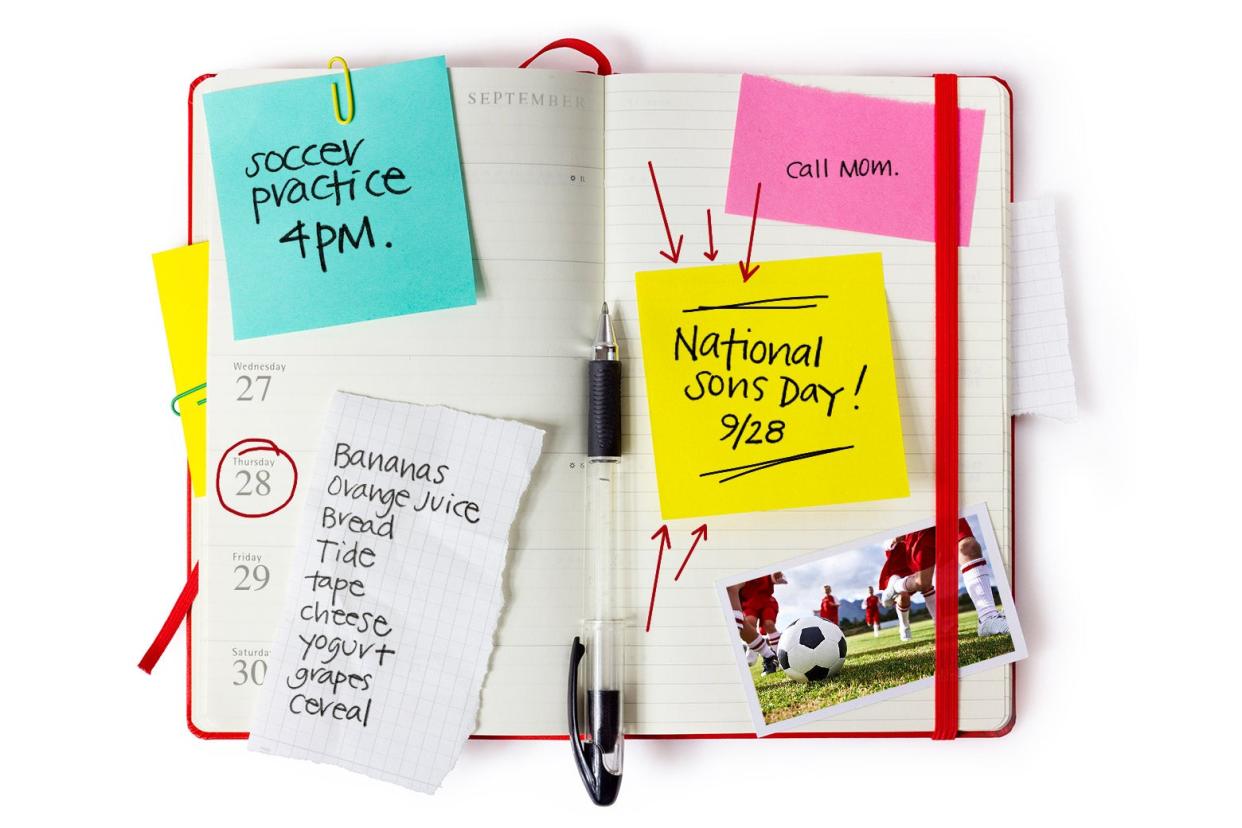Why Are We Being Bombarded With Bogus, Made-Up Holidays This Week?

- Oops!Something went wrong.Please try again later.
When reality TV star and mogul Kris Jenner posted an Instagram tribute dedicated to five of her children this week, a segment of her followers who are well-aware that Jenner has six children, not five, was confused. “I am the luckiest mommy in the world to share this beautiful life with my five incredible, loving, kind, generous, strong, smart, creative, amazing daughters!!!,” she wrote, under a slideshow of photos of herself over the years with Kourtney, Kim, Khloe, Kendall, and Kylie.
“This is why rob has depression,” one of the top comments on the post reads, referring to Jenner’s son, Rob, the only child she didn’t mention.
It was easy to miss among the @-signs for all five of Jenner’s daughters, but Jenner had also included a hashtag on the post that explained Rob’s omission: #NationalDaughtersDay. Rob, not being a daughter, didn’t warrant a mention. But Jenner’s followers were right to be mystified: National Daughters Day, despite its prevalence on social media this year, is not a holiday with a long-established tradition behind it. And her followers were also right to call out Jenner for ignoring Rob, because it turns there’s also a National Sons Day, and it was also this week—and there is no evidence of a post about it on her grid.
Instead of being outraged by Jenner’s cruel neglect of her only male offspring, though, perhaps this is a good time to ask: What even are National Daughters Day and National Sons Days, and where did they come from? Over the past few years, these holidays have been gaining strength on social media, even as many of the very people participating in the trend profess to have no idea why. For this year’s National Daughters Day, on Sept. 25, Tim McGraw, Kelly Ripa, and Viola Davis were among the celebrity social media users who chose to mark the occasion this year. National Sons Day, meanwhile, was Sept. 28, and some prominent son-posters included Mandy Moore, Olivia Wilde, and Paris and Nicky Hilton.
It’s typical for the posts to include confusion about the trend’s origins—for example, one post on X, formerly Twitter, from this week reads, “According to Facebook it’s national daughter day (whatever that means!) Here are my two love bugs.” But just as confusing, if not more so, are all the posts that launch in as if National Sons and Daughters Day are a thing we’ve celebrated forever. Over the past few years on social media, there’s been a steady drip of people asking why and how this is happening: Last year, one user wrote, “What is up with all these nonsense ‘holidays’? Nations daughters day? National sons day? Ridiculous!” To go along with this year’s posts, one X user wrote, “Where did all these bullshit holidays like ‘national daughters day’ and ‘national siblings day’ come from?”
The truth is that there is remarkably little trustworthy information out there about these “holidays.” Dubious holidays are a phenomenon of the social media era, and many of them are designed to promote products. This may be the case with National Daughters Day, to a point: Sites like daysoftheyear.com include a claim that the holiday was invented in 2007 by an unnamed greeting company in India to lift up daughters in a culture that has historically revered sons. (Shouldn’t it be international daughters day, then?) “Created by a greeting card company” is usually considered one of the worst insults you can throw at a holiday, but there are some claims that National Sons Day was invented after that because boy moms wanted a fake holiday of their own—can’t girls have anything? Relatedly, National Sons Day is curiously sometimes cited as being celebrated on both March 4 and in late September. Overall, it’s almost impossible to fact-check any of this information because it’s all so vague and poorly sourced.
What’s not made up, though, is Google Trends data, and according to that, searches for National Daughters Day first started spiking in 2015, peaking in 2019 and 2022. National Sons Day is an even more recent phenomenon according to Google Trends, receiving its first search interest in 2018. In 2021, Truthorfiction.com wrote a post about the accusation that National Daughters and Sons Days weren’t holidays at all but data mining efforts. Their results were inconclusive, but it seems more likely that the days are engagement bait as opposed to anything more nefarious. And it’s easy to see why it might spread so quickly: What’s easier, and more instantly digestible, than posting a photo and a little message about how much you appreciate your kid?
If there are greeting cards for National Daughters and Sons Day, I haven’t noticed them, so the primary beneficiary of these holidays seem to be Instagram and Facebook: more posts, more likes, more time spent on the site that ads can be sold against. Still, it’s not the worst thing in the world for there to be yet another excuse to post pictures of your kids, as if parents needed another one. If people want to take a moment to celebrate their kids, that’s not really hurting anyone. But it’s also not really doing anything. On other holidays that have been criticized as Hallmark-invented, like Mother’s Day, I find that most people try to take the time to get together with or at least call their mothers. National Sons and Daughters Day seem a little empty in comparison, less like holidays than chain mail, or an obligation to be fulfilled. A lot of holidays are fake—what is Valentine’s Day, really?—but maybe we are right to consider all the holidays whose primary raison d’être is posting … a little faker than the rest.

